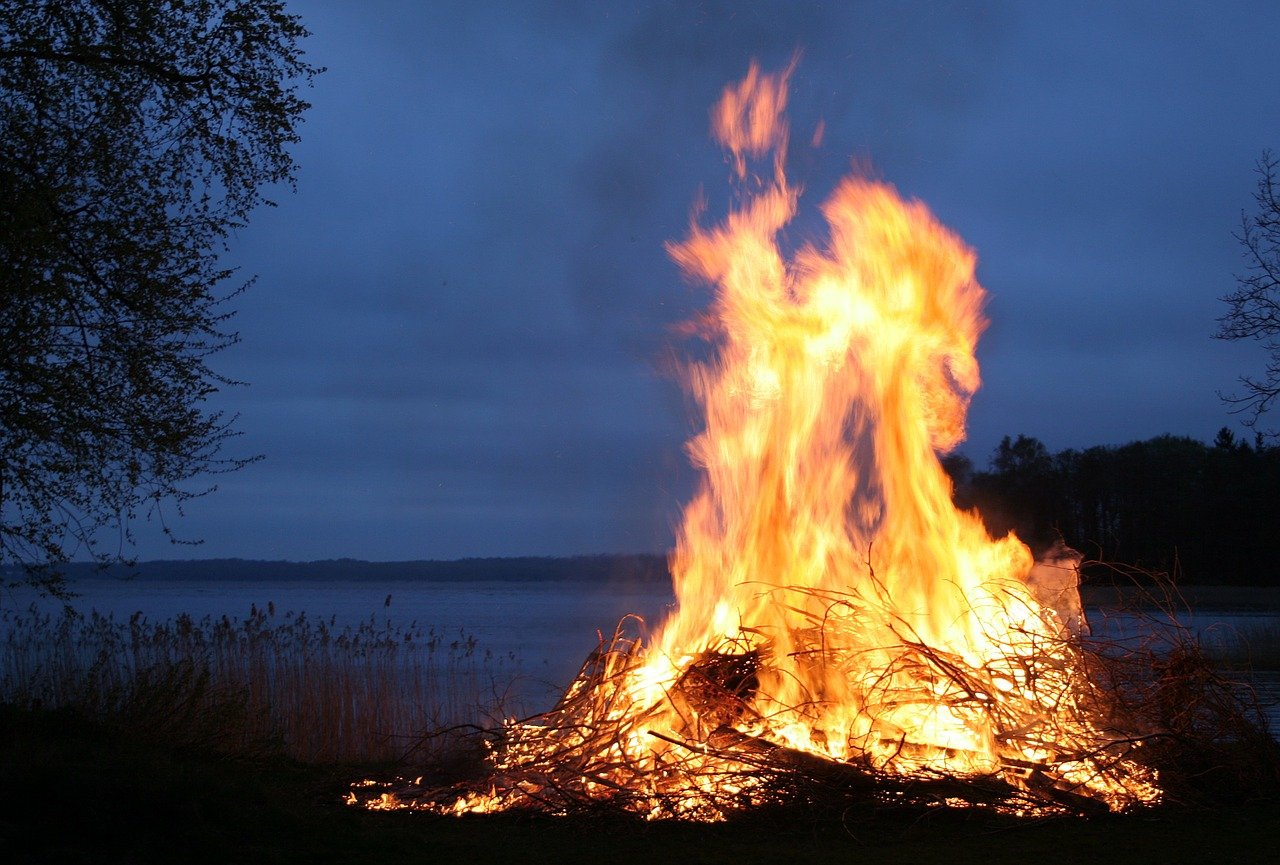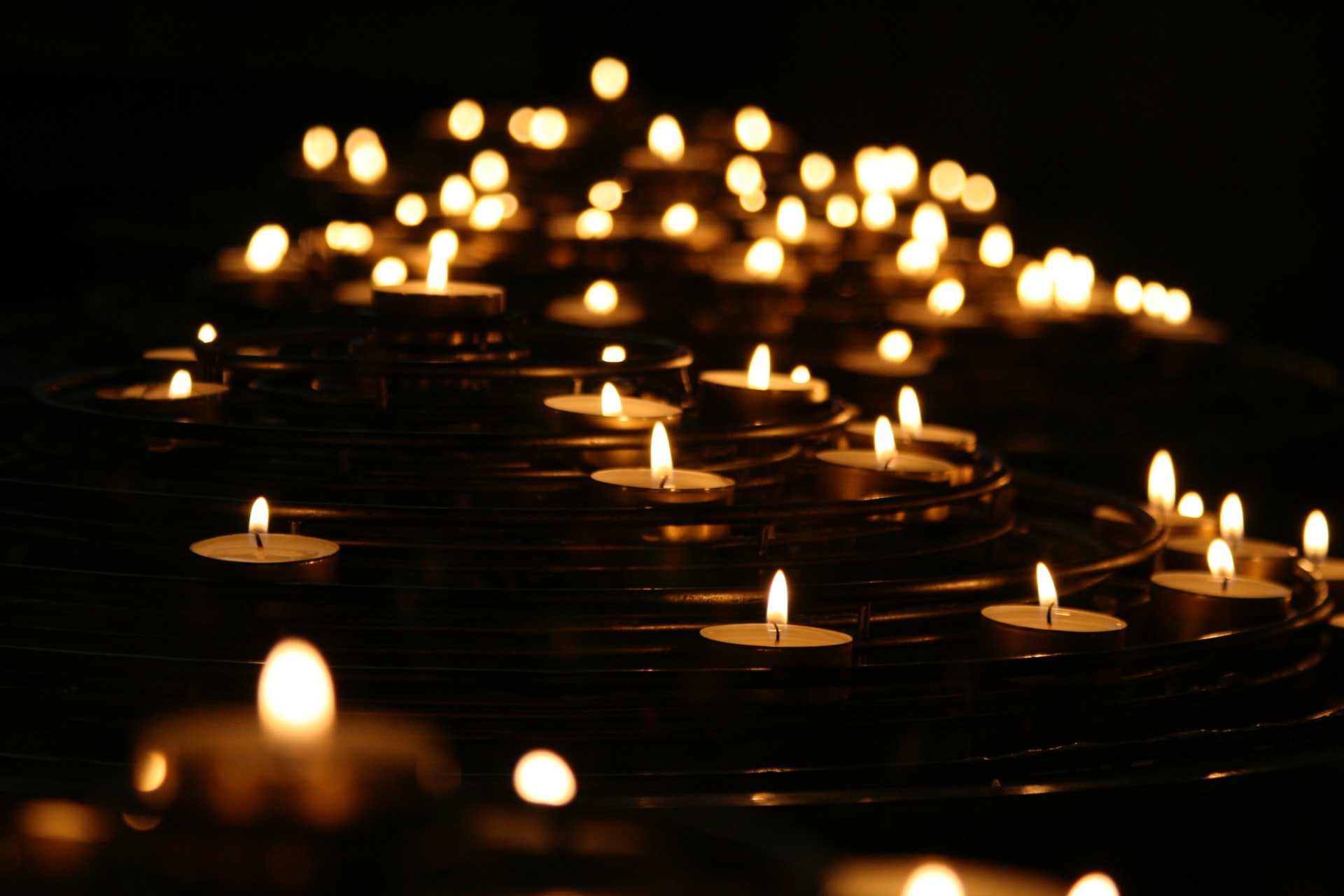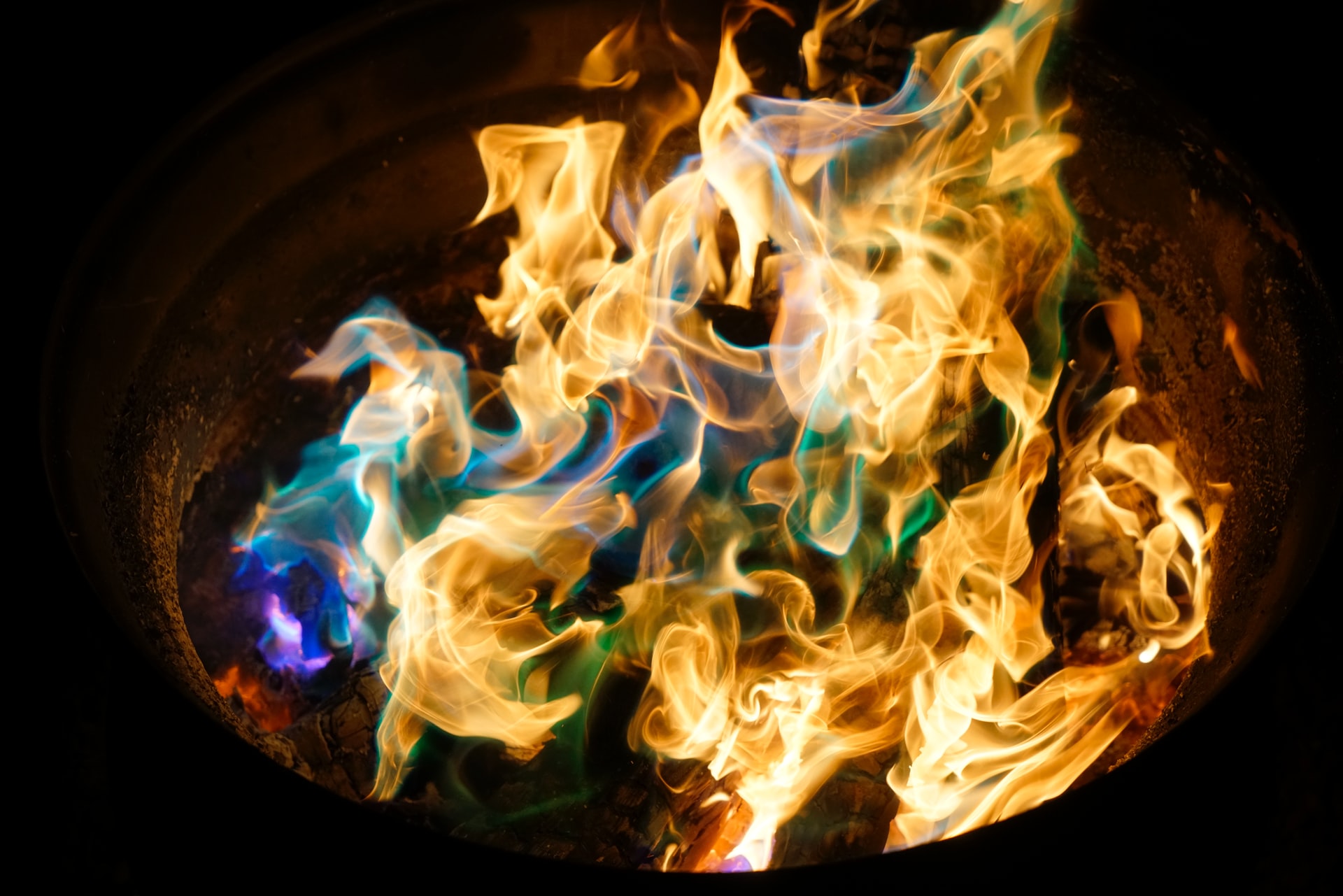This entry was posted on February 18, 2022.

Humans have always been drawn to fire. The dazzling, shifting light of flames awakens something deep within and never ceases to amaze us. However, any photographer will tell you that photographing fire is no easy task. After all, you’re trying to capture shots of light sources that never stop moving or changing.
Thankfully, there are tips and tricks sure to upgrade your fire photography. That way, you can tame the flames and capture some sizzling hot shots!
Below are the essential steps to capture stunning photos of fire like a pro:
- Stay safe and bring the right equipment.
- Adjust your settings.
- Practice with candlelight.
- Know the differences between fire types.
- Switch between motion and stillness.
- Experiment with flame colours.
- Understand how fire affects mood.
- Take advantage of smoke.
- Think outside the box.
1. Stay Safe and Bring the Right Equipment
It’s no secret that fire can be hazardous. In fact, as many as 30,000 house fires occur in the U.K. per year.
So before you light a flame, ensure you take all the necessary precautions.
First, you need some equipment (and no, we’re not talking about camera equipment this time!). Things you should consider having on hand when shooting fire are:
- A fire extinguisher - This is especially crucial for fire photography indoors.
- Fire-resistant gloves - Fire-resistant gloves protect you when directly handling hot objects.
- Safety goggles - Large fires can let loose hot debris and sparks. Goggles protect your eyes when you’re near them.
Additionally, make sure you bring a tripod along.
It’ll make long-exposure shots easier and help prevent you from leaning too close to flames.
2. Adjust Your Settings
Generally, you’ll want to set your camera to manual mode for fire photography. Automatic modes tend to struggle with fire as a subject, especially in the dark.
Here’s how you’ll typically want your exposure triangle set:
- ISO - Start with the lowest ISO possible (such as 200). You’ll want low light sensitivity since you‘re directly photographing light.
- Shutter speed - A fast shutter speed will catch crisp, distinct shapes of flames. A slower shutter speed is better for capturing sparks or a fire‘s motion.
- Aperture - A narrow aperture, such as f/8, is excellent for fire photography. You generally don‘t need to worry about too much dark since you‘re shooting a light source.
Adjusting your settings doesn’t just mean your camera’s modes either—the physical setting of your photos is also vital to consider.
For fire photography, you typically want a neutral or dark background for the best contrast.

3. Practice With Candlelight
Before you tackle bonfires or fireworks, try taking some shots of candlelight.
Candles are perfect for practising fire photography: they’re small, controlled, and easy to adjust. Plus, you can move them around for various backgrounds and settings.
Once you get comfortable manually adjusting your setting, try some experimentation.
Blow on the candle and try capturing its motion.
Also, attempt photos from different distances to see how that affects your exposure triangle.
While it may seem hard at first, doing so helps prepare you for tackling more dynamic and massive flames.
4. Know the Different Fire Types
Fireworks, lanterns, torches; fire comes in numerous shapes and forms. And each offers breath-taking opportunities for photographers.
So, make sure you’re not just limiting yourself to campfires!
For example, try capturing long exposure shots (1-3 seconds) of a friend swinging around sparklers.
You’ll find that the motion creates stunning streaks of light in photographs. When done right, you can even spell words out or create shapes. Such as in this video.
5. Switch Between Motion and Stillness
One of the brilliant things about photographing fire is how different shots can look depending on motion.
Freezing a flame in photography can reveal all sorts of stunning details. Such as the numerous swirls and curves that a bonfire creates. Plus, a shorter shutter speed can also reveal objects hidden behind or in a fire, adding depth.
However, there are times when motion blur is more eye-catching.
You’ll want a long shutter speed to capture all the details of fireworks bursting across the sky. Or for creating mesmerising swirls from the moves of fire performers.
Either way, make sure to experiment with movement and shutter speed in your fire photography. They make a massive difference in how flames appear.

6. Experiment With Fire Colour
You might already know that you can influence the shape and size of your fire.
But did you know you can change the colour too?
There are several things you can feed a flame to make it turn blue, purple, or even green!
Here’s a rundown of some of these magical burning hues and what causes them:
- Purple - Potassium chloride (found in water softening salt)
- Pink - Lithium chloride
- Blue - Copper chloride
- Green - Sodium borate
- Yellow - Sodium chloride
These substances are all commonly found in household cleaners and detergents. However, make sure you’re using them safely.
Here’s a video showing the basics of how to achieve these effects.
7. Understand How Fire Affects Mood
Fire isn’t just an excellent subject for photos. You can also use it to influence the vibe of your shots.
For many people, candlelight evokes feelings of romance. They provide a soft, warm glow to subjects when they’re close.
And when out of focus in the background, numerous candles resemble a sea of twinkling stars.
Conversely, large flames such as bonfires or fireworks are more festive. They add powerful highlights and contrast that makes scenes look striking.
Light direction matters, too.
While candlelight ordinarily feels calming, having it shine from below can make scenes look more unnatural. Or even unsettling.
8. Take Advantage of Smoke
Where there’s fire, there’s smoke.
And where there’s smoke, there are numerous fabulous photo opportunities!
Smoke adds breath-taking accents and depth to your fire photos.
It serves as an excellent neutral background to accentuate the colours of flames. Not to mention that smoke also creates beautiful swirls and trails around fires.
Add things like kindling or paper on top of your flame to generate more smoke. But only do so safely outdoors with things like bonfires or fire pits.
9. Think Outside the Box and Have Fun
There’s no limit to the mesmerising effects and unique scenes you can create with fire.
So don’t be afraid to challenge yourself and try new things!
You could try experimenting with how light sources affect the appearance of flames. Or attempt setting unusual things on fire to capture how they change while burning.
Regardless of what you try, make sure you keep things fresh and enjoy yourself.
The best photographs come when you’re having fun and being creative.






